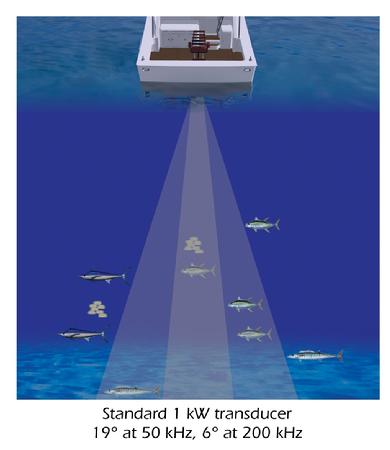Sonar - Just how do they find fish?
Posted by Shotgun Shelly on 26th May 2020
Sonar Beams...Just how is "sound" used to find fish?
Sonars send sound waves or signals into the water that rebound when they strike an item. The fish reflects several of the signal back to the boat, the rest of the signal remains to the seafloor then it gets better to the watercraft. (Thanks To Lowrance Electronic Devices, Inc.).
Some sonar systems are particularly created to situate fish. These systems utilize the exact same fundamental principle as various other sonar systems-- they send audio pulses, determine the time it takes for echoes to return, as well as determine the range to the objects.
Fish finding sonar devices send out as well as get signals lot of times per secondly. They concentrate audio into a beam that is sent from a transducer. These devices consist of visual screens that publish the mirrors. All-time low appears as a constant line attracted throughout the screen. In addition, any objects that are in the water between the surface area as well as all-time low might likewise be presented.
Fish finders find the visibility of fish largely by detecting the air in their swim bladders. The air preserved in the swim bladder alters the audio course and also mirrors energy back. The fish finder discovers this shown energy and converts it into fish photos on the display.
Fish finders run at high frequencies of sound, approximately 20-200 kHz (20-200,000 cycles per second). This helps specify targets and also can even display 2 fish as 2 separate mirrors or arches. (See Just how is sound used to recognize fish?). Reduced regularities (i.e. 50 kHz) can pass through deeper waters however might not be able to specify private targets. Putting more energy into the pulse sent by the transducer increases the possibility of obtaining a signal to return in much deeper water.
Photos are based on the aesthetic display as arcs due to the movement of the watercraft or the fish. When audio is transferred from the transducer it is concentrated right into a light beam. As the noise enters deeper water, the light beam spreads out and also covers a larger area. If the transmitted sound were plotted, it would certainly appear like a traffic cone with a pointed top and also a broad base.
Audio transmitted from the boat's transducer spreads out in a conical form.
Fish that swim within this cone might mirror several of the sound back to the transducer. The shown noise, or resemble, shows up on the finder's chart display screen. A college of fish will certainly appear as many different shapes or formations, depending upon just how much of the institution is within the transducer's cone. Specific fish, specifically those in deeper water, might appear as arches on the display screen. The following images show just how a fish arch forms as the fish moves with the sonar light beam.
Instance of exactly how an arc is formed as a fish passes through the finder beam.
A fish arch types as the fish relocates through the sonar beam. A mark appears on the chart display screen (on right) when the fish gets in the outer side of the cone. As the fish swims with the cone, the range between the transducer as well as the fish reduces, as well as the mark begins to contour up. When the fish is at the center of the beam of light it is straight under the transducer. The mark begins to flatten out as the fish reaches its closest point to the transducer. As the fish remains to move through the light beam to the contrary end of the cone, the distance increases. The mark starts to contour downward since the fish is relocating additionally and also further far from the transducer. An arched mark appears as the graph display screen graphs this distance modification. At Shotgun Marine we stock all major brands of transducers. Furuno, Simrad, Raymarine, Garmin, Lowrance, Koden and more. Follow the links for product and pricing.





